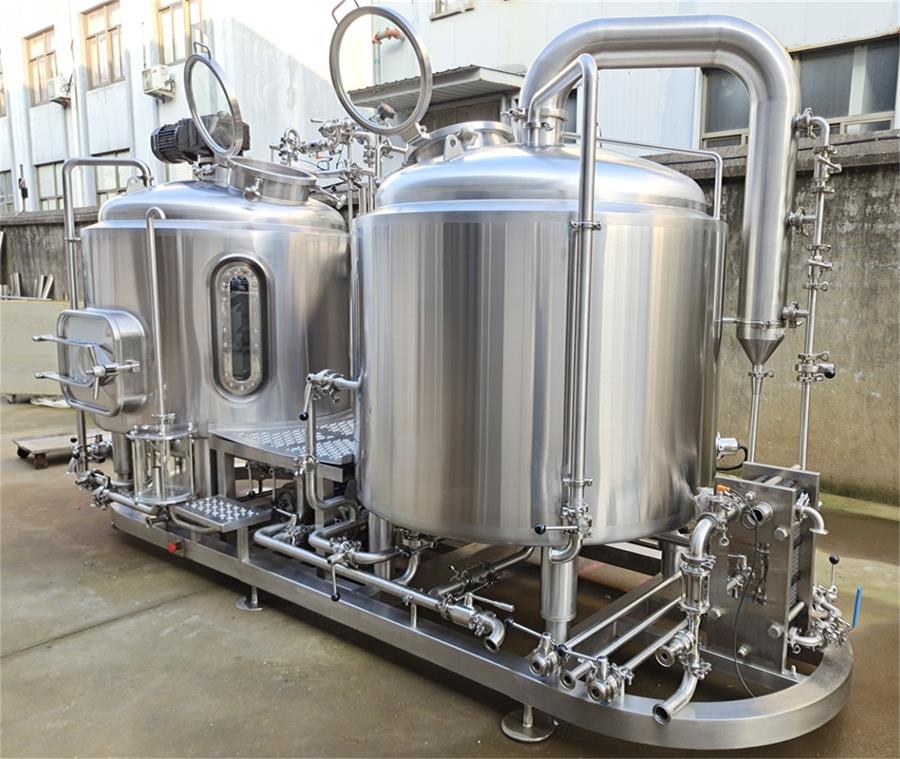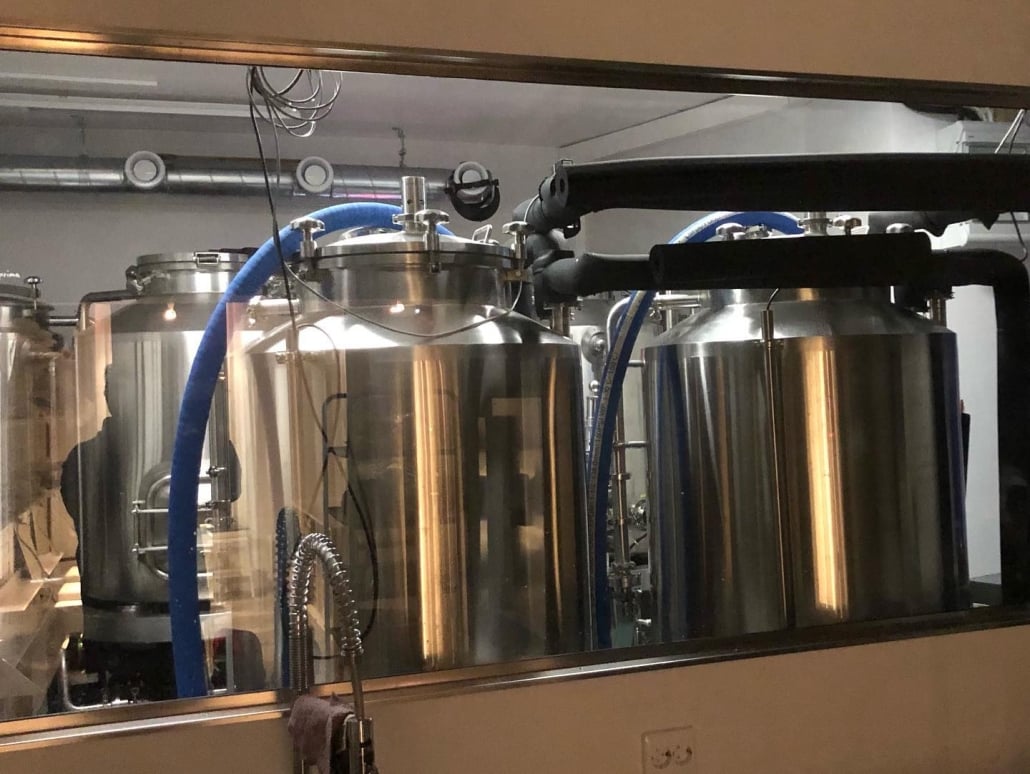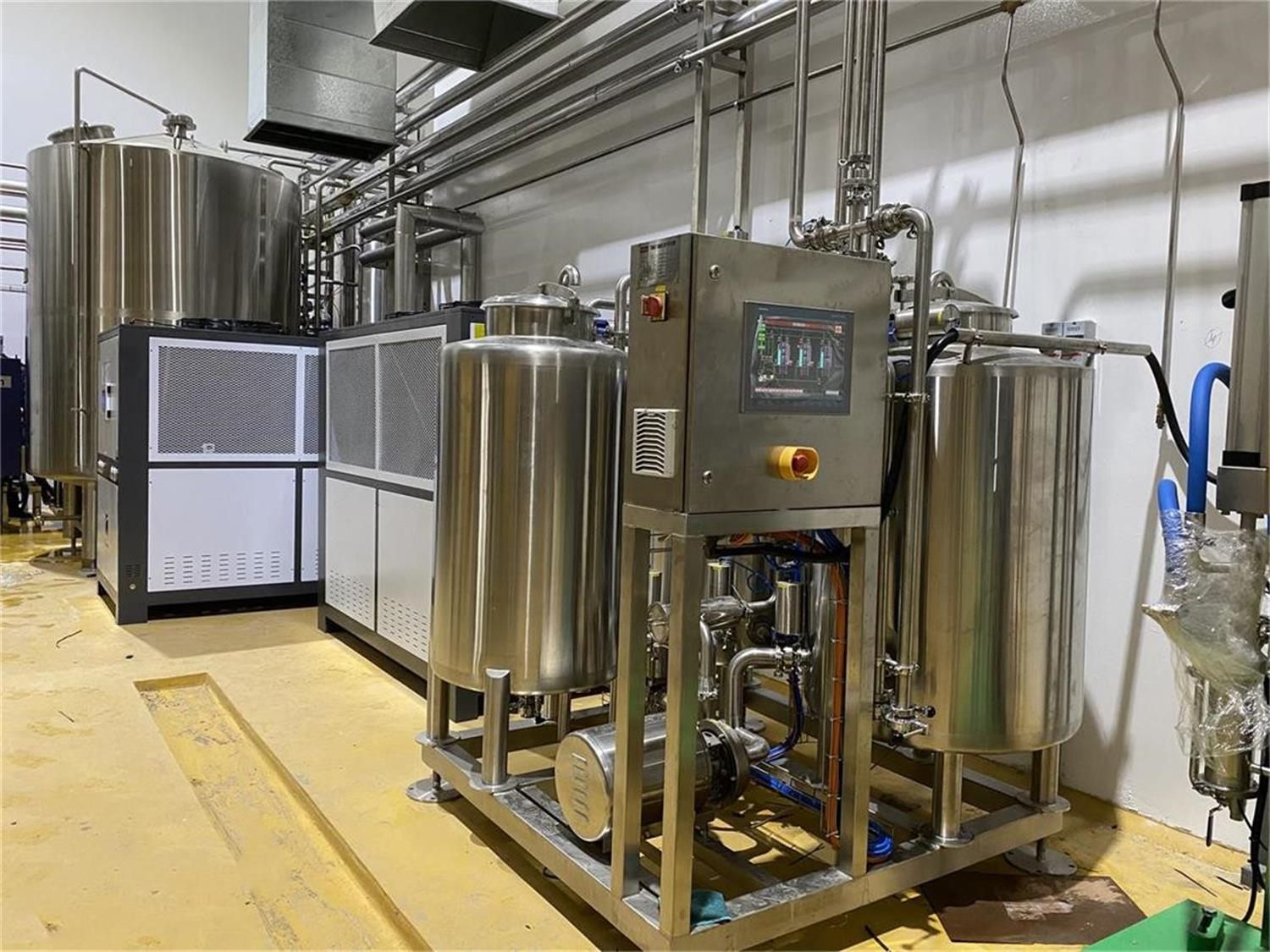Electric Beer Brewing System
Brewing beer at home or on a commercial scale has evolved dramatically over the years. The electric beer brewing system has become increasingly popular for both hobbyists and professionals, offering ease, precision, and efficiency in the brewing process. Whether you’re just starting or looking to upgrade your equipment, understanding the intricacies of an electric brewing system is essential. This guide breaks down everything you need to know—from equipment to installation, and from pros and cons to maintenance tips.
Overview of Electric Beer Brewing System
An electric beer brewing system allows brewers to create beer by using electricity as the primary heat source. Traditional systems may use gas, but electric systems offer more precision and control, making it easier to replicate brews. These systems are gaining popularity due to their safety, efficiency, and ability to automate parts of the brewing process. Whether you’re brewing a small batch or scaling up to larger volumes, electric brewing systems provide flexibility in design, capacity, and customization.
Why Go Electric?
Electric brewing systems offer a few key advantages compared to gas-powered setups. One of the biggest perks is the ability to brew indoors without the need for proper ventilation to handle exhaust fumes. With an electric system, you get precise temperature control, making it easier to brew consistently great beer.

Electric Beer Brewing Equipment Guide
The right equipment is essential to crafting great beer. Electric brewing systems consist of several components that work together to provide a seamless brewing experience. Understanding the components, their roles, and how they interact can make a huge difference in the quality of your brew.
Key Components of an Electric Brewing System
| Component | Function | Why It’s Important |
|---|---|---|
| Electric Heating Element | Provides the heat needed to raise and maintain the temperature during various stages of brewing. | Offers better precision and energy efficiency compared to gas burners, ensuring consistent heat distribution. |
| Brew Kettle | The vessel where wort is boiled and hops are added. | A critical part of the brewing process, where most of the brewing takes place. |
| Control Panel | The digital interface that allows brewers to manage temperature, time, and other important aspects of the brewing process. | Provides accuracy and convenience in monitoring and adjusting brewing parameters. |
| Mash Tun | Used during the mashing process to convert starches in the malt into sugars. | Plays a key role in the quality and type of beer you brew. |
| Pump | Moves liquid between vessels, especially important for sparging and recirculating the wort. | Increases brewing efficiency by automating liquid transfers and helping in maintaining steady mash temperatures. |
| Chiller | Rapidly cools the wort after boiling. | Essential for avoiding contamination and ensuring proper fermentation by cooling down the wort quickly. |
| Fermentation Vessel | Where the yeast is added to the cooled wort and the fermentation process begins. | A quality vessel ensures that fermentation happens in a clean, sterile environment, essential for brewing good beer. |
| Hoses & Fittings | Connects the various parts of the brewing system, allowing liquids to move efficiently between components. | Ensures that the brewing process is smooth, with no leaks or contamination, and that liquids are transferred cleanly between stages. |
Types of Electric Beer Brewing Systems
Brewers can choose between several types of electric brewing systems depending on their needs, budget, and level of experience. The following table breaks down the most popular options:
| System Type | Description | Best For |
|---|---|---|
| Single Vessel Systems | Combines the mash tun, kettle, and boil vessel in one unit. Easy to operate, space-saving, and perfect for beginners. | Homebrewers or small-scale brewers looking for an all-in-one system. |
| 3 Vessel Systems | Includes a dedicated mash tun, brew kettle, and hot liquor tank. Offers more control and flexibility but requires more space and investment. | Experienced homebrewers or semi-commercial brewers who need more precision and scalability. |
| Electric BIAB (Brew In A Bag) | Simplified system where mashing and boiling occur in the same vessel. Uses a bag to hold grains, making cleanup easier. | Ideal for small-batch brewers or beginners who want to try electric brewing with a low-cost setup. |
| Custom Electric Systems | Fully customized setups designed for larger-scale operations, with added features like automated pumps, programmable control panels, and chillers. | Commercial brewers who need to scale up their operations and require advanced automation and control. |
The Electric Brewing Process Explained
Brewing beer is a detailed and time-sensitive process, but electric brewing systems simplify many of these steps, allowing for more consistent results. Let’s break down the brewing process using an electric setup.
1. Mashing
Mashing is where the starches in the malt are converted into fermentable sugars. Using an electric system, you can easily maintain a steady mash temperature with the control panel, usually around 150-158°F (65-70°C), depending on the type of beer you’re brewing. The heating element ensures even heat distribution, preventing scorching.
2. Boiling
Once the mash is complete, the liquid (known as wort) is transferred to the brew kettle. The electric heating element brings the wort to a boil, where hops are added for bitterness, flavor, and aroma. The ability to precisely control the boil with an electric system reduces the risk of overboiling or burning the wort.
3. Cooling
After boiling, the wort needs to be cooled rapidly to prevent contamination and prepare for fermentation. This is where an electric chiller (or immersion chiller) comes into play, lowering the temperature quickly and efficiently.
4. Fermentation
The cooled wort is transferred to a fermentation vessel, where yeast is added to start the fermentation process. Electric brewing systems often include automatic pumps and temperature controls to maintain the ideal environment for yeast to work its magic.
5. Bottling or Kegging
Once fermentation is complete, the beer is ready to be bottled or kegged. At this stage, an electric system doesn’t necessarily play a direct role, but having an organized system helps make the transition from fermenter to bottle/keg smoother.
Capacity, Space, Design, Layout, and Customization
Choosing the right brewing system requires careful consideration of your available space, the capacity you need, and any specific customization options. The table below compares these parameters for different brewing setups.
| Parameter | Single Vessel Systems | 3 Vessel Systems | Custom Electric Systems |
|---|---|---|---|
| Capacity | Typically 5-15 gallons | Can brew up to 20 gallons or more | Highly customizable, from 20 gallons to commercial scale. |
| Space Requirement | Compact, requires minimal space | Requires more space due to multiple vessels | Requires significant space depending on customization |
| Design | All-in-one design, easy to use | Separate vessels provide more control | Fully customizable with advanced features |
| Layout | Simple layout, easy to assemble and maintain | Requires more planning and organization | Custom layout depending on individual preferences |
| Customization | Limited customization available | Moderate customization available | Fully customizable based on needs and budget |
Price Range and Suppliers for Electric Brewing Systems
Electric brewing systems come in a wide price range, depending on the system’s complexity and capacity. Below is a general breakdown of price ranges and suppliers to help guide your decision.
| Supplier | Price Range | System Type | Target Audience |
|---|---|---|---|
| Blichmann Engineering | $1,000 – $4,000 | Single Vessel, 3 Vessel | Homebrewers, small breweries |
| Grainfather | $800 – $1,600 | Single Vessel | Homebrewers, advanced hobbyists |
| BrewBuilt | $2,000 – $7,000 | 3 Vessel, Custom Systems | Semi-commercial breweries |
| Ss Brewtech | $1,200 – $5,000 | Custom Systems, 3 Vessel | Home and small breweries |
| Spike Brewing | $1,500 – $10,000+ | Custom Electric Systems | Commercial breweries |
Installation, Operation, and Maintenance of Electric Brewing Systems
Proper installation and maintenance are essential to getting the most out of your electric brewing system. Here’s a detailed table that covers installation, operation, and maintenance tips.
| Aspect | Details |
|---|---|
| Installation | Most electric systems are relatively easy to install with basic tools, but larger systems may require professional installation, especially for custom systems. |
| Operation | Operating an electric brewing system typically involves managing temperature and flow through the control panel. Most systems come with manuals for easy operation. |
| Maintenance | Regular cleaning of all components, including the heating element, kettle, and pumps, is essential. Occasional recalibration of the control panel is also recommended. |
How to Choose the Right Supplier
Choosing the right supplier for your electric brewing system can feel overwhelming, but the following factors can help simplify the process.
| Criteria | Explanation |
|---|---|
| Reputation | Check reviews, customer feedback, and brewing forums for supplier reputations. |
| Support & Warranty | Choose a supplier with good customer support and a solid warranty for their products. |
| Price vs. Quality | Consider both the price and quality of the equipment. Cheaper systems might save you money upfront, but you may lose out on features and longevity. |
| Customization Options | Some suppliers offer highly customizable systems. If you’re looking for specific features, go for suppliers who specialize in tailored systems. |
Advantages of Electric Beer Brewing Systems
Electric brewing systems offer many advantages over traditional gas-based systems. Let’s break down the main benefits.
| Advantage | Details |
|---|---|
| Precision | Electric systems provide highly accurate temperature control, which is crucial for consistent brewing. |
| Safety | There’s no open flame, making it safer to brew indoors without needing a proper ventilation system. |
| Ease of Use | Many electric brewing systems come with digital control panels that automate parts of the brewing process, making it easier for beginners to get great results. |
| Energy Efficiency | Electric systems are generally more energy-efficient than gas, especially for smaller batches. |
| Indoor Brewing | With no fumes or the need for ventilation, electric systems are perfect for brewing in enclosed spaces like garages or basements. |
Disadvantages and Limitations of Electric Brewing Systems
Despite their many advantages, electric brewing systems do have some downsides.
| Limitation | Details |
|---|---|
| Initial Cost | Electric systems can have a higher upfront cost compared to basic gas systems, especially when you factor in customizations and automation. |
| Power Requirements | Some electric brewing systems require special electrical setups (e.g., 240V outlets), which can be expensive to install in a home setting. |
| Potential for Malfunction | Like any system with electronic components, electric brewing systems can break down, and repairs can be more complex and expensive compared to simpler gas setups. |

How to Operate an Electric Beer Brewing System
Operating an electric beer brewing system may seem daunting at first, but once you get the hang of it, it’s fairly straightforward. The key is to use the control panel effectively and understand the flow of the brewing process.
Step-by-Step Guide to Operating an Electric Brewing System
- Prepare Ingredients: Make sure you have all your grains, hops, and yeast ready.
- Set Up the System: Plug in your electric heating element and connect all hoses and fittings between vessels.
- Start Mashing: Use the control panel to set the mash temperature. Add your grains once the water has reached the desired temperature.
- Transfer to Kettle: Once the mash is complete, use the pump to move the liquid (wort) to the brew kettle.
- Boil and Add Hops: Boil the wort and follow your recipe to add hops at the right times.
- Cool the Wort: Use your chiller to bring the temperature down quickly.
- Transfer to Fermenter: Pump the cooled wort into your fermenter and add the yeast.
- Ferment and Wait: Set the fermentation temperature and allow the yeast to do its job.
FAQ
Here’s a list of frequently asked questions about electric beer brewing systems, compiled in a helpful format to address common concerns.
| Question | Answer |
|---|---|
| Can I use an electric system indoors? | Yes! One of the major advantages of electric brewing systems is that they don’t produce fumes, so they’re safe to use in enclosed spaces like kitchens or garages. |
| What’s the best system for beginners? | Single vessel systems or electric BIAB (Brew In A Bag) systems are perfect for beginners due to their simplicity and lower cost. |
| Do electric systems use a lot of power? | It depends on the size of the system. Most homebrewing setups are quite energy-efficient, but larger systems may require special outlets (e.g., 240V). |
| How much beer can I brew at once? | Small systems usually brew 5-10 gallons, but custom systems can be scaled up to brew 20+ gallons, depending on your needs. |
| What’s the main advantage of going electric? | The precision of temperature control and the ability to brew indoors are two major benefits, making electric systems ideal for homebrewers. |
In conclusion, an electric beer brewing system offers a streamlined and efficient way to craft beer with precision and control. Whether you’re a hobbyist or looking to scale up, these systems provide flexibility in design, capacity, and automation options, allowing you to take your brewing game to the next level.
Share this entry
Interested in learning more about Brewing Systems including additional details and pricing information? Please use the form below to contact us!
YOLONG BREWERY EQUIPMENT FAQS
- Commercial Brewery / Craft Brewery / Microbrewery / Nanobrewery
- What is The Difference Between Craft Beer and Industrial Beer?
- The Bespoke Differences In Custom Brewing Systems
- Everything You Need to Know About Kettle Souring
- How to Choose Brewing Equipment for Your business?
- How To Choose The-Best Partner To Build Your Commercial Microbrewing System?
- Two Detection Sensors That You Need To Use In Your Brewhouse System
- Remote Control Applications in Brewing Equipment/How does it work?
- How To Clean Your Brand New Brewery Tanks?

